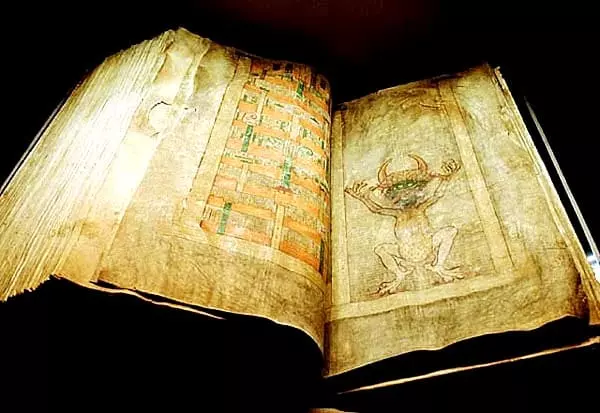In the mid-15th century, Johannes Gutenberg revolutionized the way books were made by inventing movable type, paving the way for the modern book as we know it today.
However, the ancient Romans had already created the first books using a codex form.
Before Gutenberg’s invention, books were painstakingly copied by hand. The earliest written words date back to 2400 BCE in Egypt on Papyrus scrolls.
The invention of book presses and printing machines in the 15th century made books cheaper and quicker to produce.
While digital formats are now popular, the oldest surviving books can still be found in museums.
Here are the top 10 oldest books in the world:
10. Gutenberg Bible (mid-1450s)
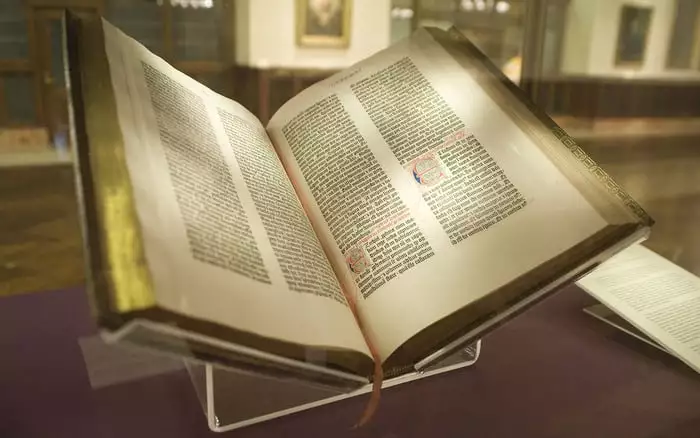
As said above, The Gutenberg Bible is featured on this list because it was the first book to be printed using mass-produced movable type, and it is the oldest example of what people think of when they think of a book.
The book was printed between 1450 and 1455 by Johannes Gutenberg, the inventor of the printing press and the initiator of the Printing Revolution.
According to early documents, 200 copies of the Bible were to be printed on cotton linen paper and 30 copies on velum animal skin, but the exact number of copies created is unknown.
Only 22 copies of the Gutenberg Bibles are known to exist today, making them the world’s most valuable and rare printed document.
9. The Celtic Psalter (11th century)
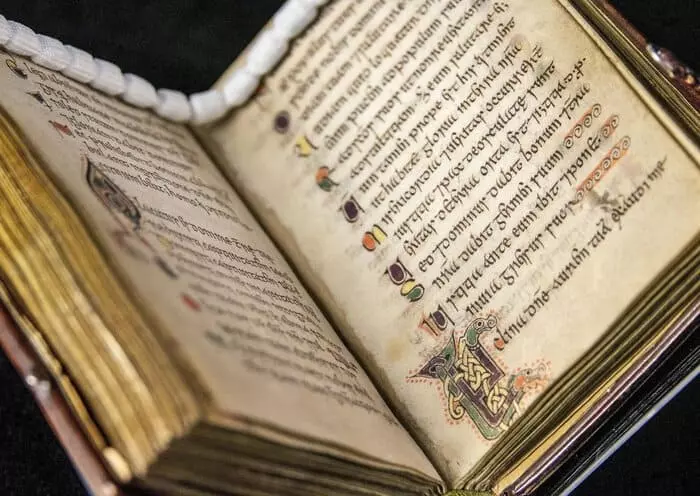
The Kells Book of Scotland is known as the Celtic Psalter. The pocket-sized book of Psalms can be found at Edinburgh University, where it was initially displayed in 2009.
The book was written in the 11th century AD, making it Scotland’s oldest living book. The book is around 938 years old.
8. The Diamond Sutra (11 May 868)
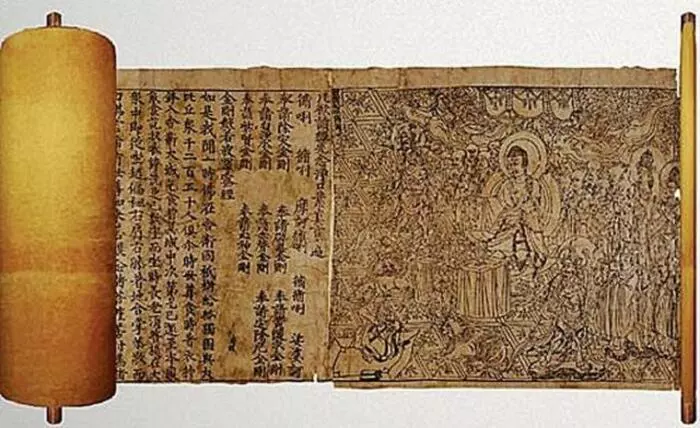
The Buddhist sacred book, The Diamond Sutra, is the world’s oldest printed book. The book is a combination of Chinese characters printed on a scroll of grey printed paper looped around a wooden pole, discovered with other printed items in a walled cave in China.
As noted at the end of the text, the book was copied on his parents’ orders by a man named Wong Jei in May 868 AD. The book is estimated to be roughly over 1145 years old, making it one of the oldest books in the world.
7. The Book of Kells (around 800 AD)
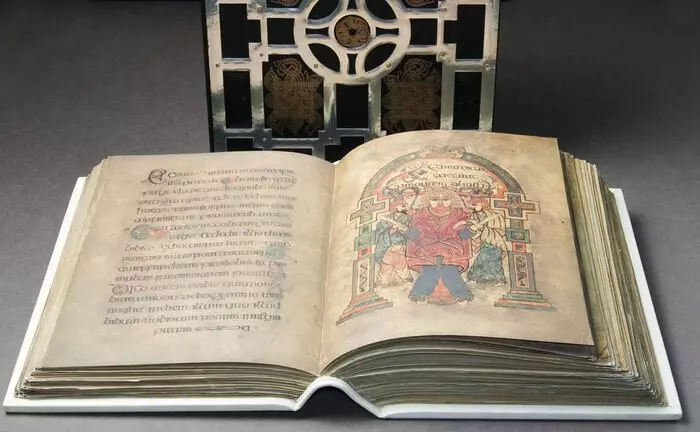
The Book of Kells (also known as the Book of Columba) at Trinity College is arguably the most famous relic on exhibit in Dublin.
You cannot visit Ireland’s capital without hearing about the Book of Kells.
The book was written around the year 800, although researchers have been unable to pinpoint when or where it was written.
This book is said to have been created for display and ceremonial purposes rather than to be read aloud.
The reason for this is that the visuals are intricate and complex, yet the text has been reproduced carelessly, with entire words missing or long paragraphs repeated.
6. St Cuthbert’s Gospel (7th to 8th century AD)
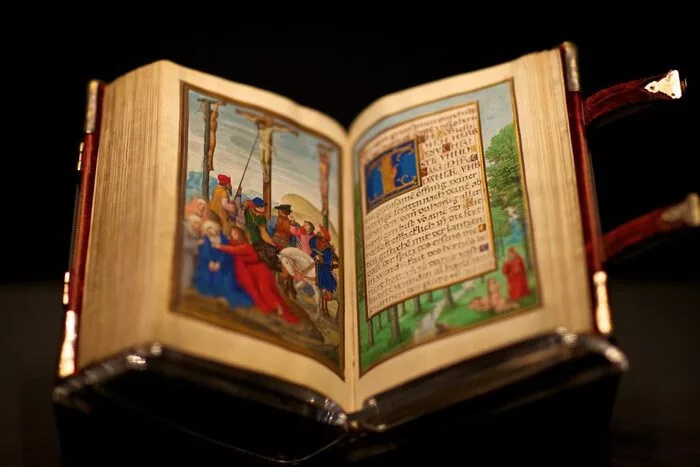
In roughly 698 AD, the St. Cuthbert Gospel book was buried on the island of Lindisfarne off the coast of Northumberland beside St. Cuthbert, an early British Christian leader.
The book was privately owned after it was rediscovered until it was presented to a Jesuit community in Belgium in 1769.
The book has been on loan to the British Library in London since 1979, and they now own it after raising around $14 million to purchase it from the Jesuits.
In an attempt to keep the book safe from Viking raiders, it was moved to Durham, where it narrowly escaped destruction, barely surviving the Viking conquests.
5. Garima Gospels (close to the year 500 AD)
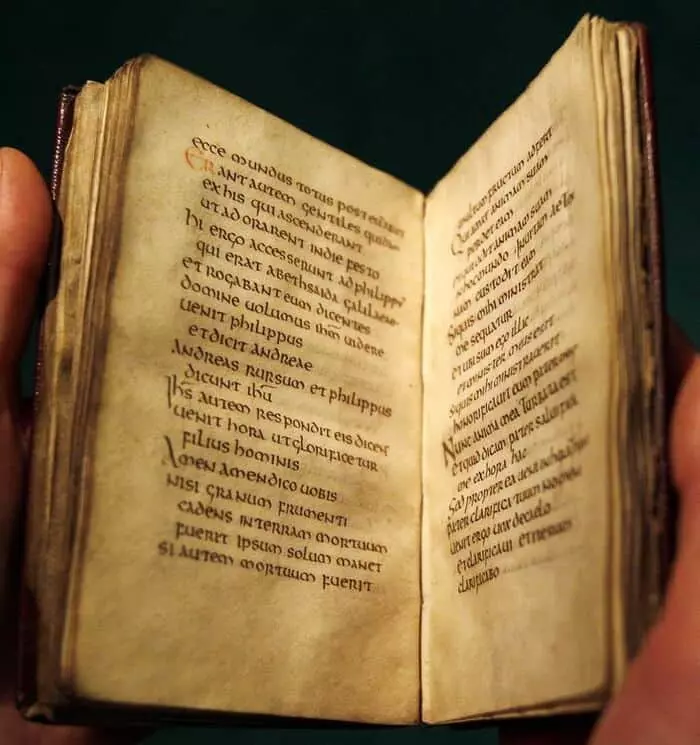
Two illuminated gospel volumes from Ethiopia’s Abba Garima Monastery are known as the Garima Gospels.
They are the world’s earliest illuminated Christian texts in their entirety.
Academics previously presumed the manuscripts were from the 11th century, but carbon dating has revealed that they were penned between 330 and 650 AD.
According to the monks, the texts have been secured and housed inside the Abba Garima Monastery since its inception.
They also believe Abba Garima, the monastery’s founder, and a Byzantine prince wrote the volumes.
In the last decade, both books were restored by a British bookbinder using assistance from the Ethiopian Heritage Fund, a British charity that helps preserve antiques found in Ethiopian monasteries.
4. The Nag Hammadi Library (around 4th century AD)

The Nag Hammadi Library was discovered in 1945 by a local in Nag Hammadi, Upper Egypt, and is thought to contain some of the earliest remaining bound novels globally.
They uncovered 13 papyrus codices tied in leather within a lockable container.
The novels, which are predominantly Gnostic literature, originate from the first half of the fourth century AD. The codices are thought to have been translated from Greek and written in Coptic.
3. Codex Sinaiticus (4th century)
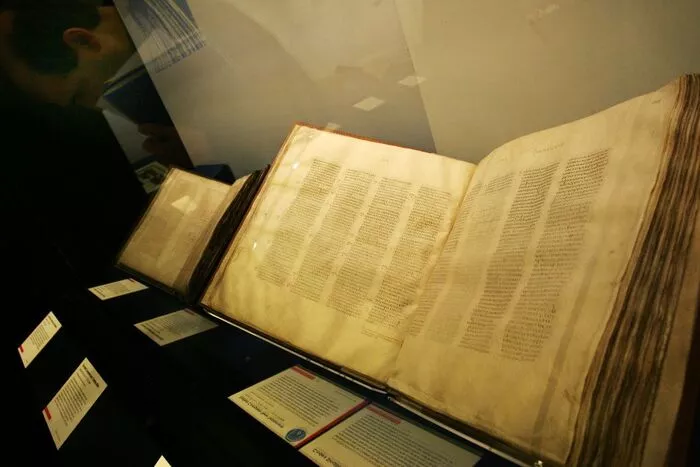
The Codex Sinaiticus, sometimes known as the Sinai Bible, is the most important resource used to determine the creation of the earliest Christian Bible.
Its sister document, the Codex Vaticanus (which dates from roughly the same time), Along with the full New Testament and other deuterocanonical and non-canonical texts, around half of the Old Testament survived (The Shepherd of Hermas).
It was discovered in 1761 at Egypt’s Saint Catherine’s Monastery, written in Greek at Constantine’s conclusion and arranged in quarto form.
The majority of the codex is presently housed at the British Library in London, while the Codex Vaticanus is kept at the Vatican, as the name suggests.
2. Tablets of Pyrgi Gold (500 BC)
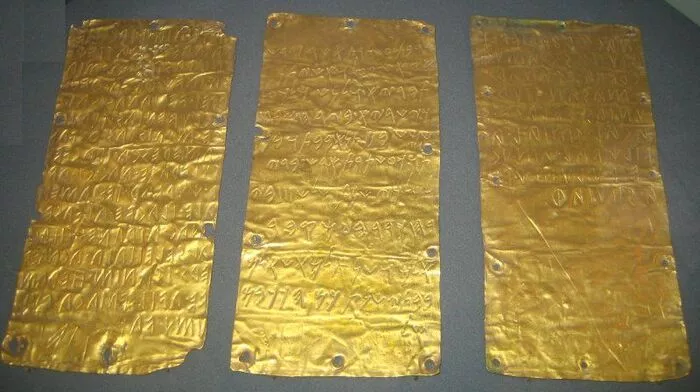
The Prygi gold tablets were discovered in 1964 during an excavation of the ancient port town of Pyrgi, Italy.
They date from circa 500 BCE. Although the tablets are not books, they do contain perforations along the edges, indicating that they were formerly bound together.
Two of the tablets are written in ancient Etruscan and the third in Phoenician, making them one-of-a-kind.
Researchers were able to decipher the Etruscan tablets using their Phoenician understanding because of the multilingual writing.
1. Book of Etruscan Gold (600 B.C.)
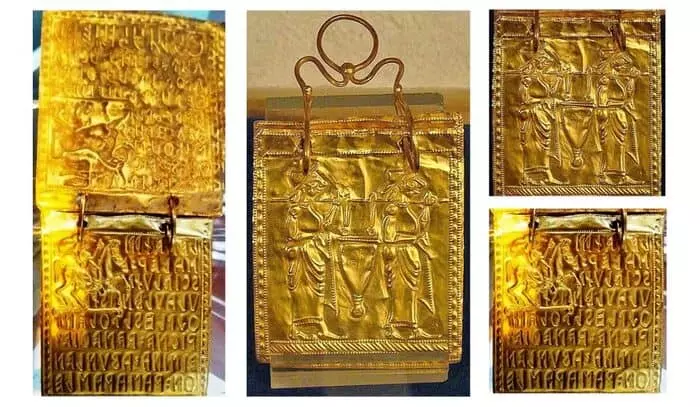
The Etruscan Gold Book was discovered 70 years ago while digging a canal off the Strouma river in Bulgaria.
It is thought to be the world’s oldest multi-page book, dating from around 660 BC.
The book is made up of six 24-carat gold sheets that are tied together by rings.
A horse, a horseman, a siren, a lyre, and warriors are also pictured on the plates written in Etruscan letters.
An unknown 87-year-old donor donated the book to Bulgaria’s National History Museum in Sofia.
The Etruscans were a prehistoric people that migrated from Lydia (now modern-day Turkey) to central Italy around three thousand years ago.
These ancient books offer a glimpse into the past and allow us to appreciate the rich history of human civilization.
Despite their age, they continue to influence modern literature and culture.
